
This article was written by Martha Hayden and originally published on the Restless Viking website on August 22, 2023.
McCourtie Park
Have you ever been inside an authentic speakeasy? Join my husband, Chuck, and I as we were given a spontaneous tour of the Rathskeller complete with bullet proof doors, secret underground parking and a full bar. On the same property we strolled McCourtie Park where seventeen faux bois (imitation wood) cement bridges stood proudly over a meandering stream. The generous and eccentric William H.L. “Herb” McCourtie had developed this Somerset Center property, near Jackson, Michigan, beginning in the 1920’s and it’s still a community fixture today!
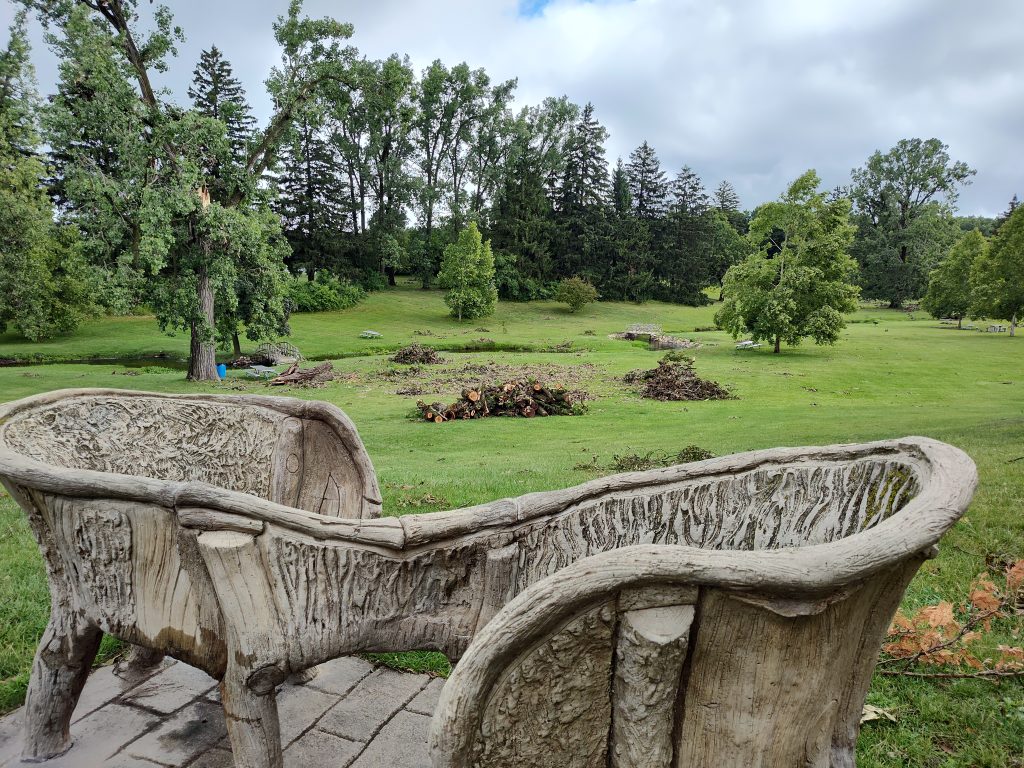
Storm Clean Up
The property buzzed with energy as the volunteers bustled through the mugginess. Following a recent storm, organized piles of debris waited to be removed. Two men and a young boy were loading branches into a cart pulled by a four wheeler. “They say it was a tornado last Wednesday, not just straight line winds as they’d thought.” A snowy-haired gentleman nodded confirming his statement.
I introduced myself and gestured to Chuck. “We look for unusual Michigan history. I write articles and Chuck produces YouTube videos.” I explained.
“Hey, would you like to see the Rathskeller?” He asked. My eyes widened! The rathskeller was an underground beer hall which had been a speakeasy during Prohibition. “REALLY? That would be amazing!” I bounced.
The Rathskeller
Oh my gosh, we were about to see the inside of an actual rathskeller, an underground speakeasy! “We’ve been redoing this.” The gentleman stated as he retrieved keys from his pocket. “People doing community service have helped us out a lot. They cleared brush growing over the bridges, too.” He explained as he twisted the key.
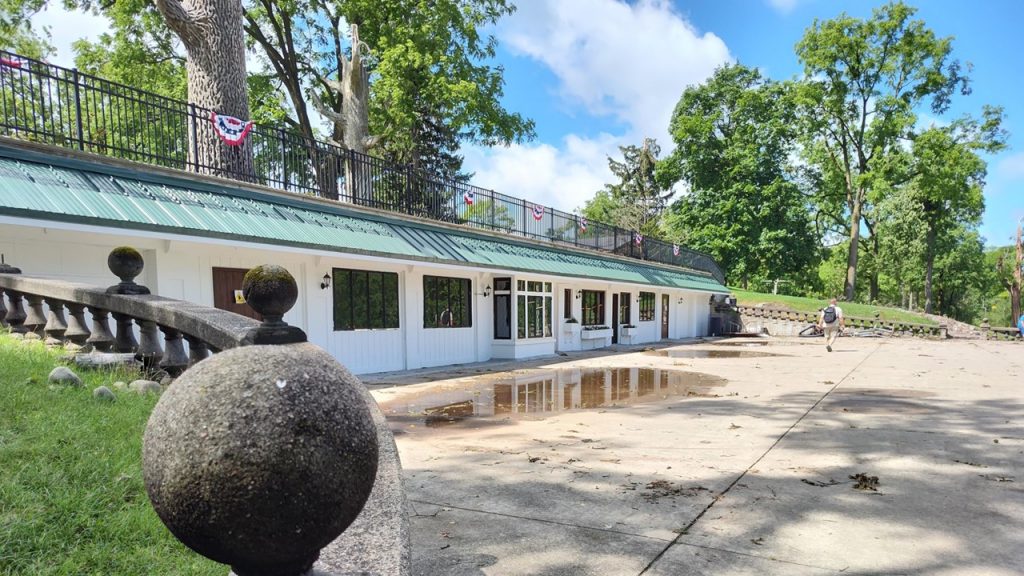
“There used to be more garage doors.” The man gestured to the far side of the structure. “Visitors could hide their cars.” His eyebrows danced. Along South Jackson Road (US 12), the whole building is hidden from view by the embankment. Only two chimneys, disguised as tree stumps, can be seen from the road.
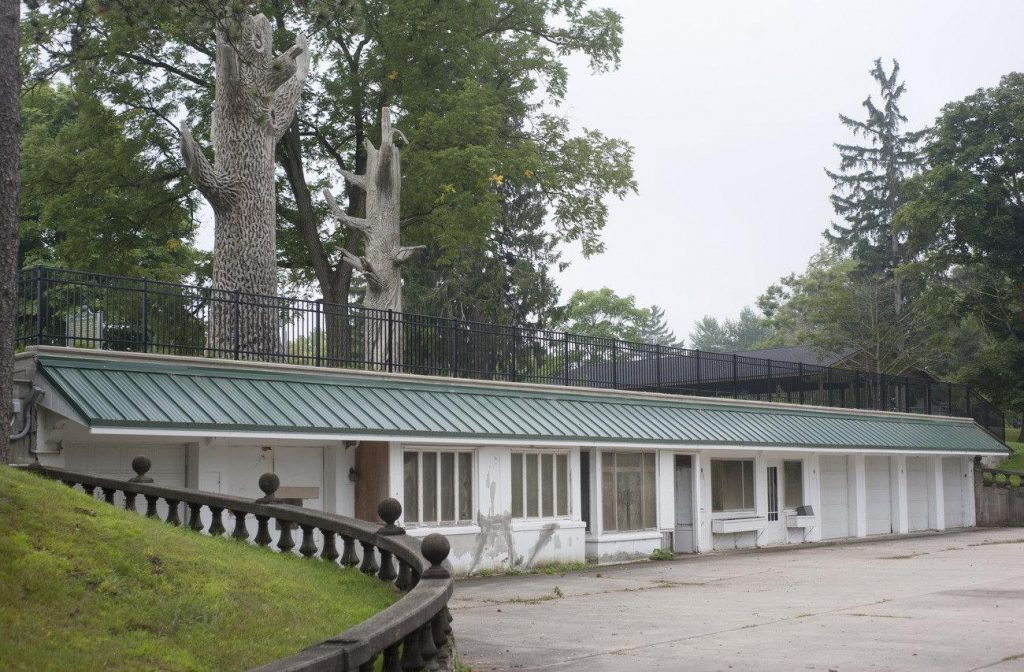
As he unlocked the door I asked, “What’s your name?” “I’m Terry and this is my grandson, Wayland.” We asked Terry how he had gotten involved. “My friend got me interested, so I started helping out.” With a downward gaze he explained that his friend had passed away. Then suddenly, catching a spark of energy, he raised his head, “I served for three years as the voluntary chairman. Now I help out when I can.” Terry will be turning 80 in January. I was shocked, he carried himself as if he was decades younger!
Our Rathskeller Tour
Stepping over the threshold, I felt as though I’d crossed a space-time continuum. Elegantly parqueted floors, paneled ceilings and leaded glass windows immersed us in a long gone era.
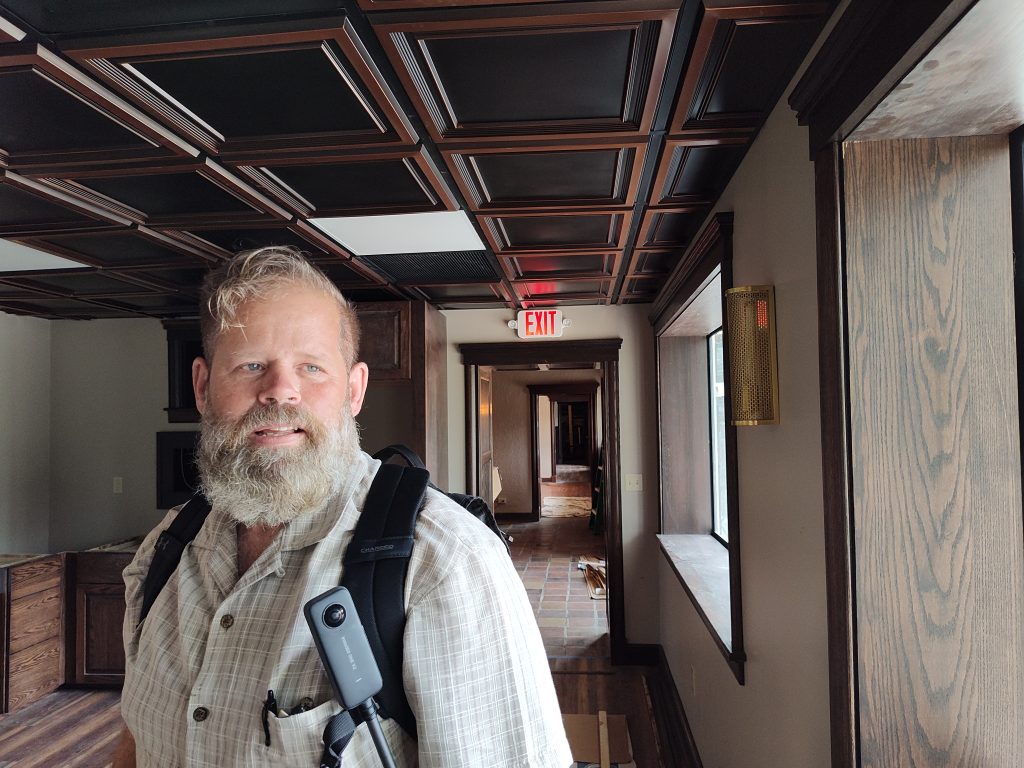
Terry and Wayland – Dedicated Volunteers – Tour Guides
Terry and his grandson, Wayland, were a wealth of first hand knowledge about this unusual hideout. “There were two tunnels running under the property.” One had gone to the McCourtie house and the other, as I understand it, had been an escape route in case of a raid.
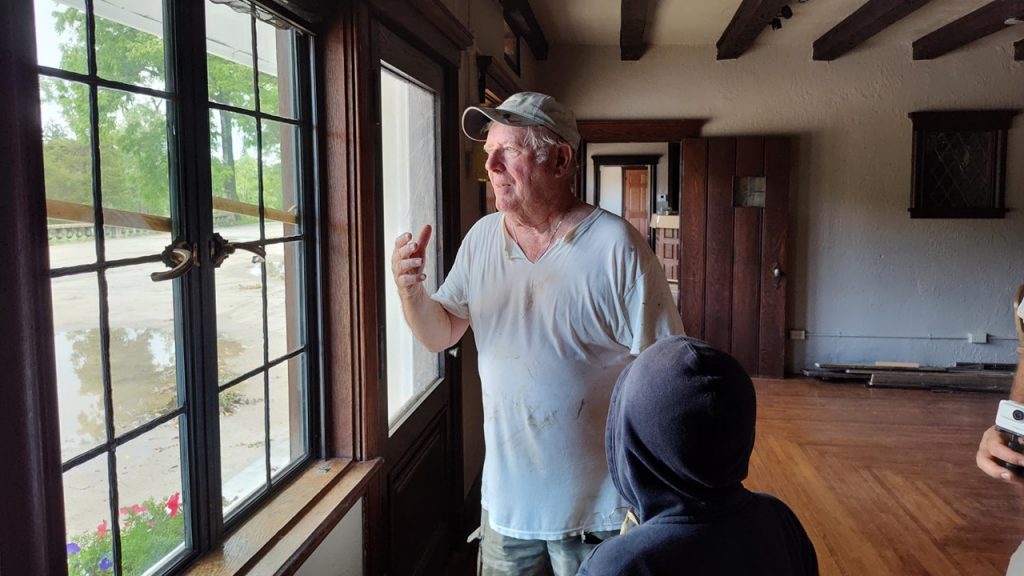
The Bar
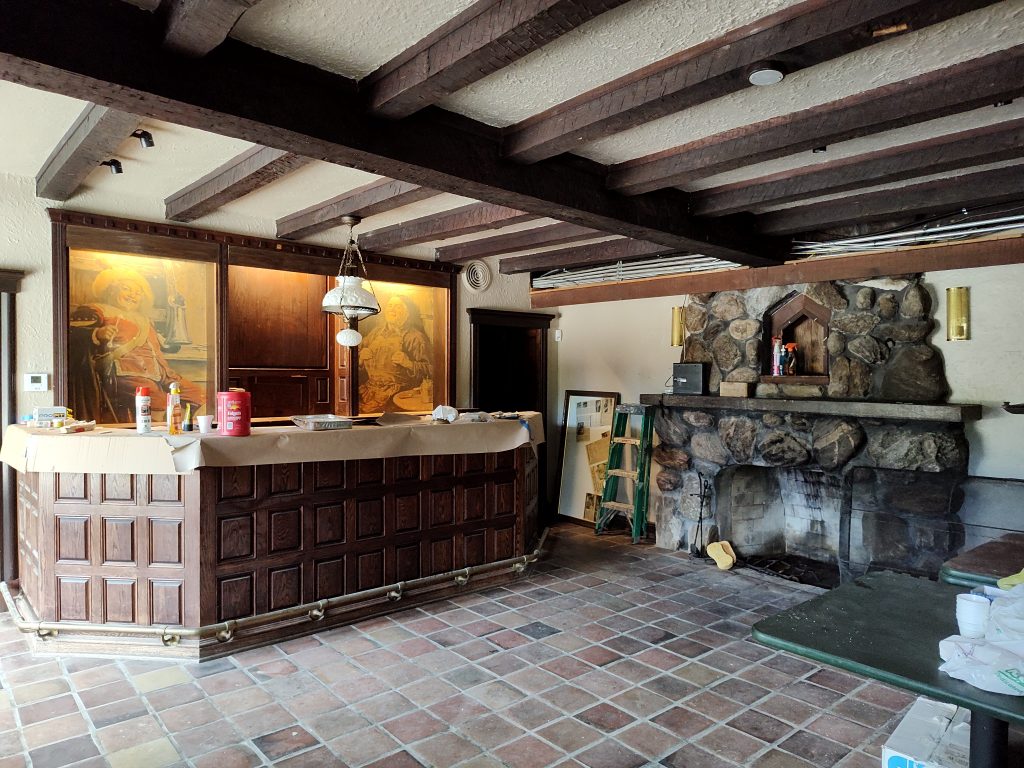
I stood there I conjuring images of all night poker games fueled by bootlegged whiskey. Oh, if only these walls could tell their tales!
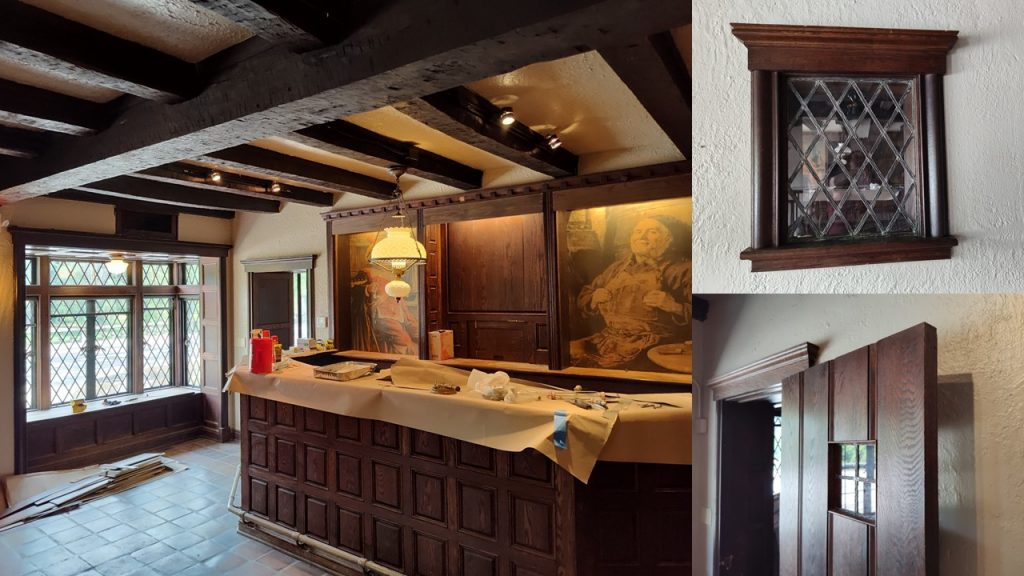
The Rathskeller Hideout
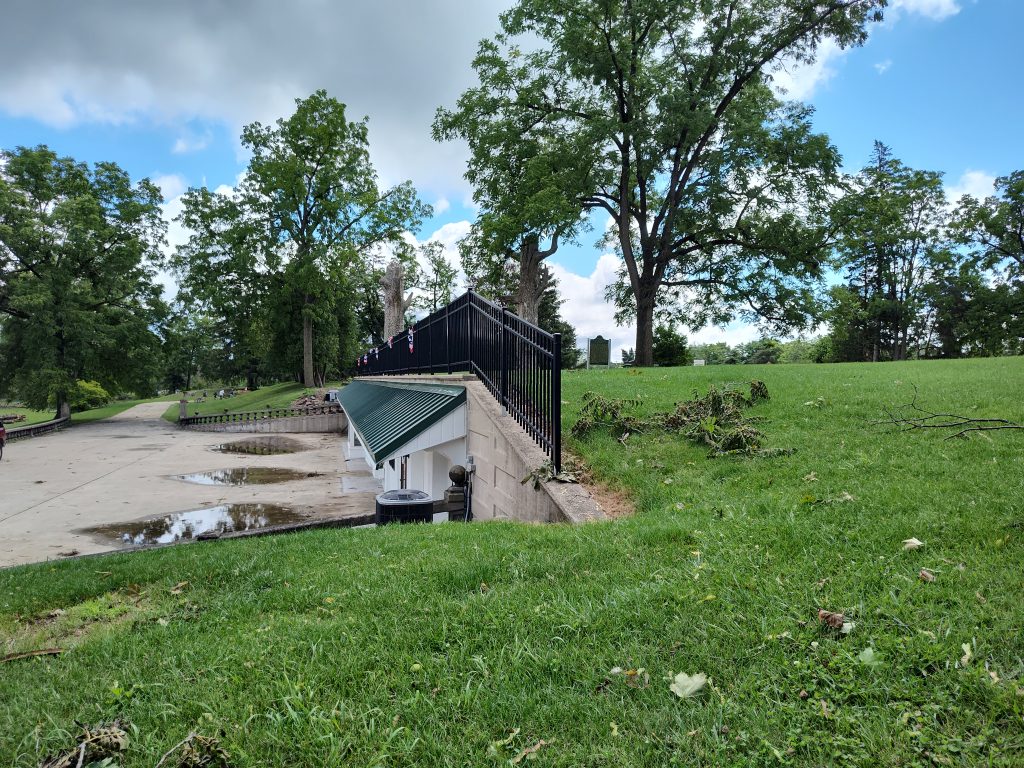
The “Trees” Above
As Wayland had pointed out the two “trees” above the rathskeller are actually chimneys. There’s one for the fieldstone fireplace (left) and the other is the furnace vent.
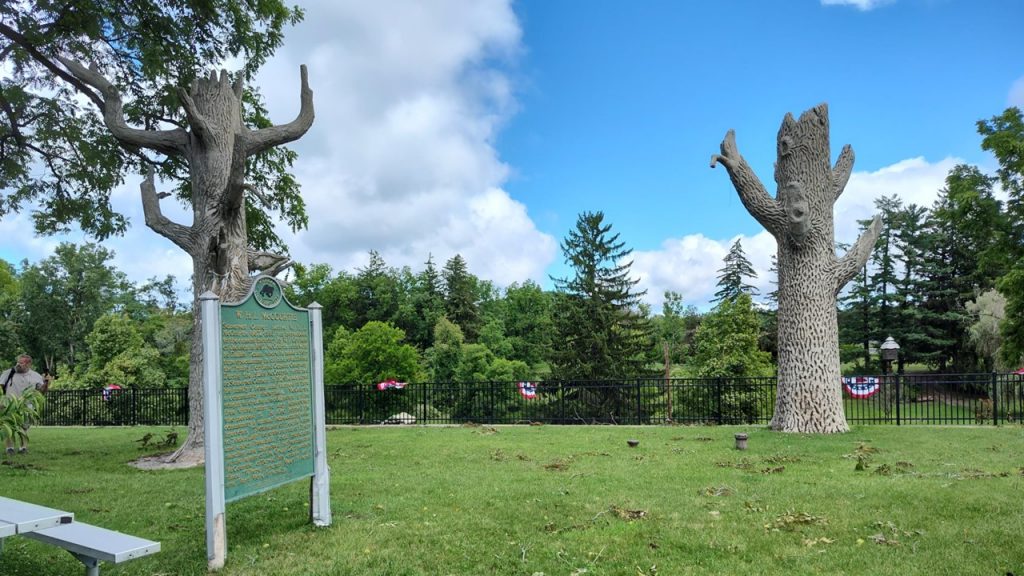
Rathskeller Visitors
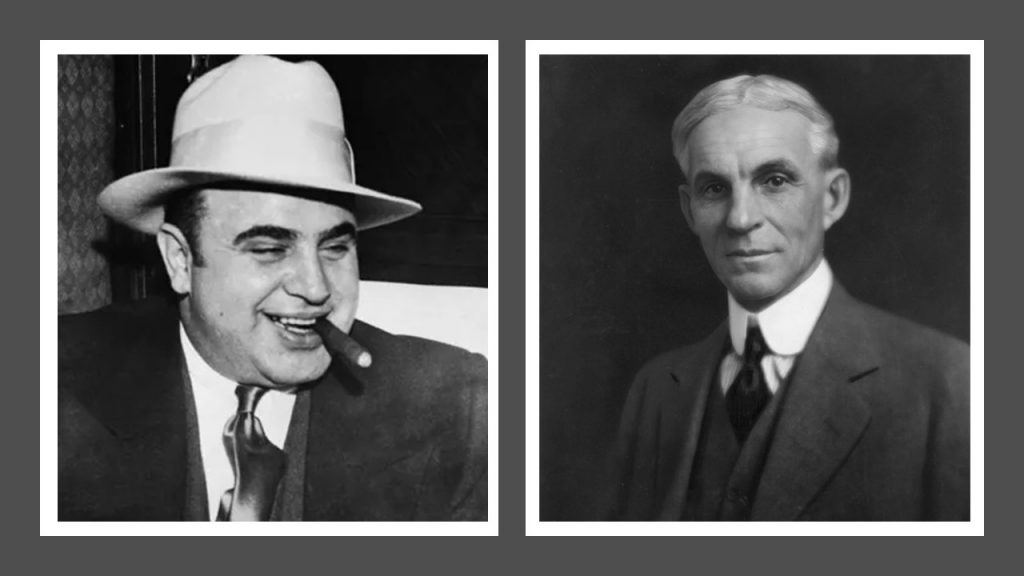
Many “entrepreneurs” had frequented Herb McCourtie’s speakeasy conveniently located between Chicago and Detroit.
“Herb” McCourtie
Who was this man? I needed to learn more about Herb McCourtie! After earning his law degree from the University of Michigan in 1894, Herb McCourtie had moved to Texas where he had accumulated a fortune using his degree to write leases for oil companies. McCourtie also invested in this “black gold.”
While in Texas Herb McCourtie met William Cowham, a cement engineer. William had explained to Herb about “marl,” which is needed in cement production. Herb believed that his Uncle’s farm back in Michigan had plenty of marl. Herb chose to move back to Michigan around 1920 and focus on creating a cement business. Already owning a mansion in Jackson, Herb McCourtie bought his Uncle’s 42 acre farm in Somerset Center from his sister, Blanche.
Putting plans into action, William Cowham, the cement engineer from Texas, and Herb McCourtie started the Trinity Portland Cement Company, which had proven to be a steady investment. McCourtie’s fortune grew!
Herb McCourtie’s Generosity
Herb McCourtie was well known for his generosity. He had offered free house paint to Somerset Center residents from the local hardware store. People could pick up their paint and McCourtie would pay their bill. He had wanted his community to look its best.
According to our tour guide, Terry, medical care for the Somerset Center community had been covered by Herb McCourtie as well.
McCourtie’s Somerset Center home had third floor which was used as a ballroom. He had hosted many lavish parties. Herb would often say, “Where friends meet friends and part more friendly.”
Annually McCourtie would host a homecoming celebration on his estate which he’d named, “Aiden’s Lair.” With musical bands and food offerings, thousands would descend upon his property.
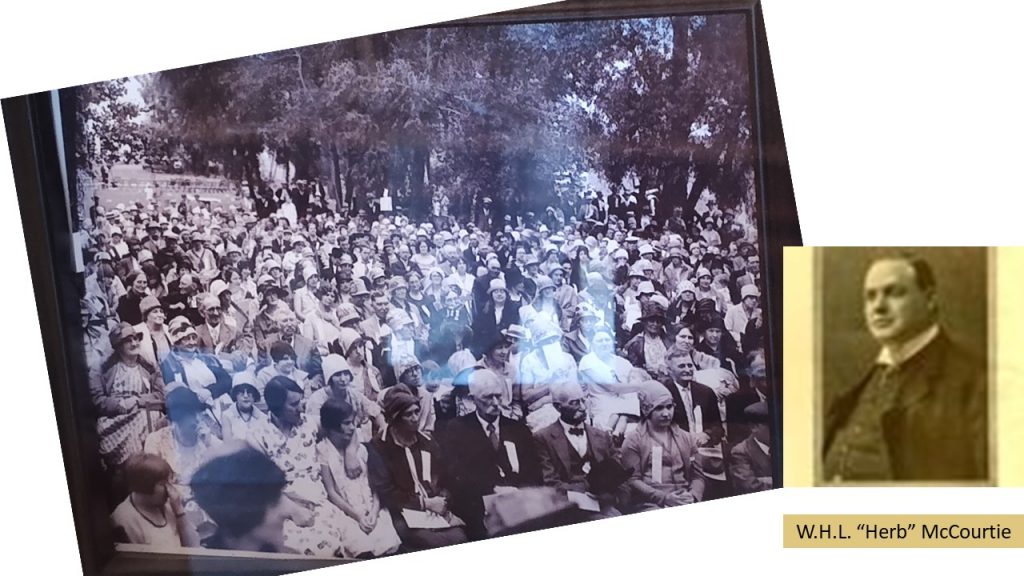
A Pool And A Fish Pond
McCourtie had two spring fed, cement pools built on his estate. One was for swimming and the other was a trout pond.

A Turfman And A Race Track
Herb McCourtie had been a ‘turfman,’ internationally known for breeding race horses. He had housed many well known horses, including Mr. McElwyn, who’d won the Kentucky Derby in 1932.
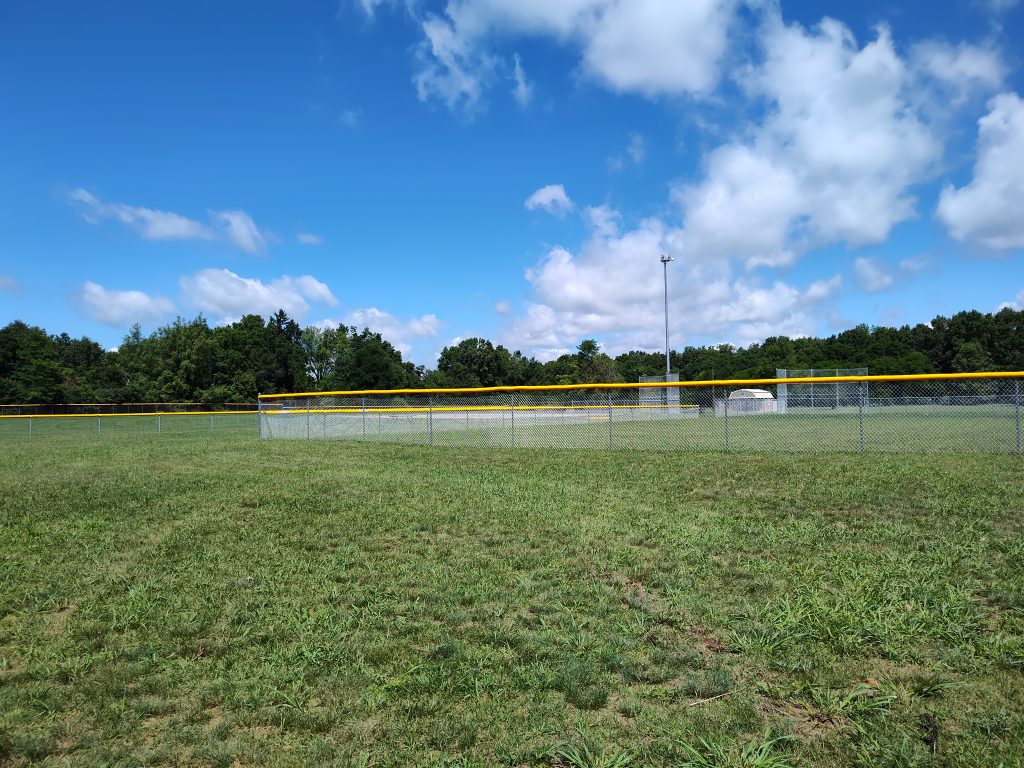
The Birdhouse
Not only had McCourtie’s home and rathskeller been uniquely designed, but so were two birdhouses. (One still exists) Secret rooms and a labyrinth of hallways were designed in this cement Purple Martin house on the property. Sadly, Purple Martins haven’t used this house in recent decades due to the large weeping willow tree hovering nearby.
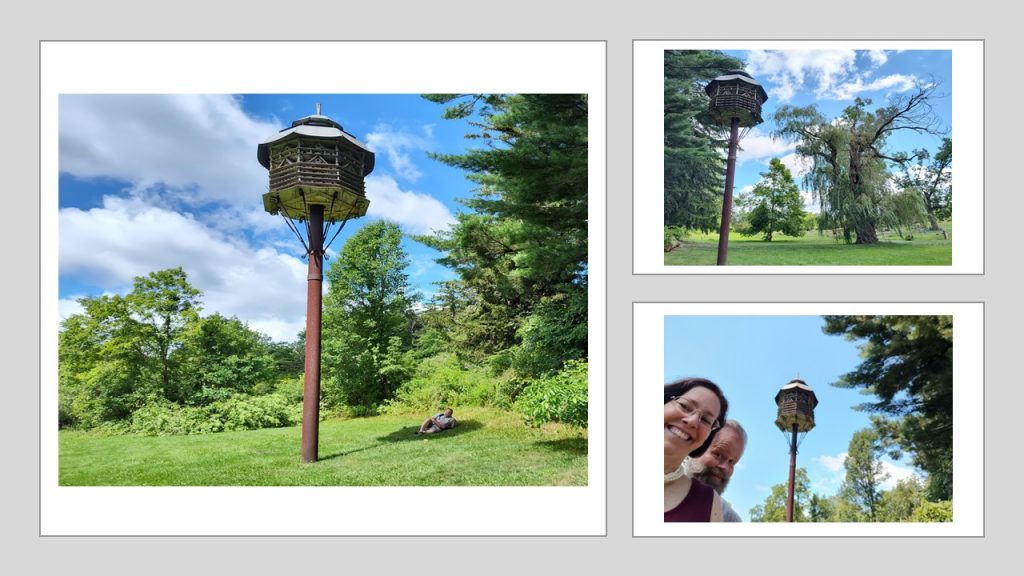
The Trabajo Rustico Bridges
Crisscrossing Goose Creek stand seventeen faux bois (imitation wooden) bridges. These cement spans were what I’d come to see, yet we’d been able to witness so much more! Each of the bridges hold their own style, painstakingly designed out of cement. Each one is a sight to behold! This trabajo rustico (rustic work) technique had originated from Texan artist, Dionicio Rodriguez, who had originally hailed from Mexico.
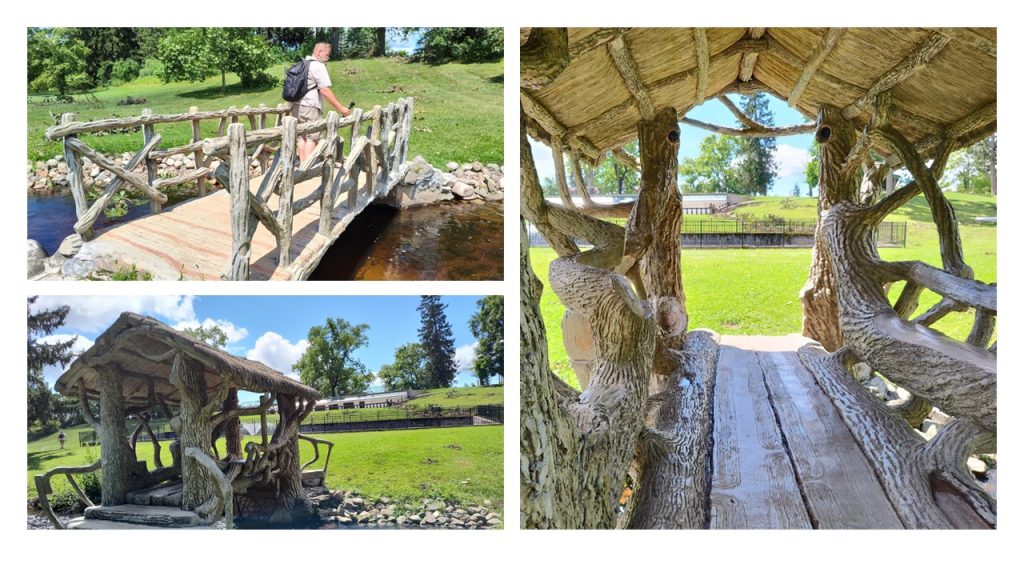
While Herb McCourtie had been in Texas, he’d admired this style of “wooden cement.” In the early 1920’s McCourtie had hired Rodriguez’s apprentices, Ralph Corona and George Cardoso, to create artistic pieces on the Aiden’s Liar property. The pair had spent over a decade forming mortar into solid wooden-looking structures. These artful bridges had been revealed to the community at the 1933 homecoming party.
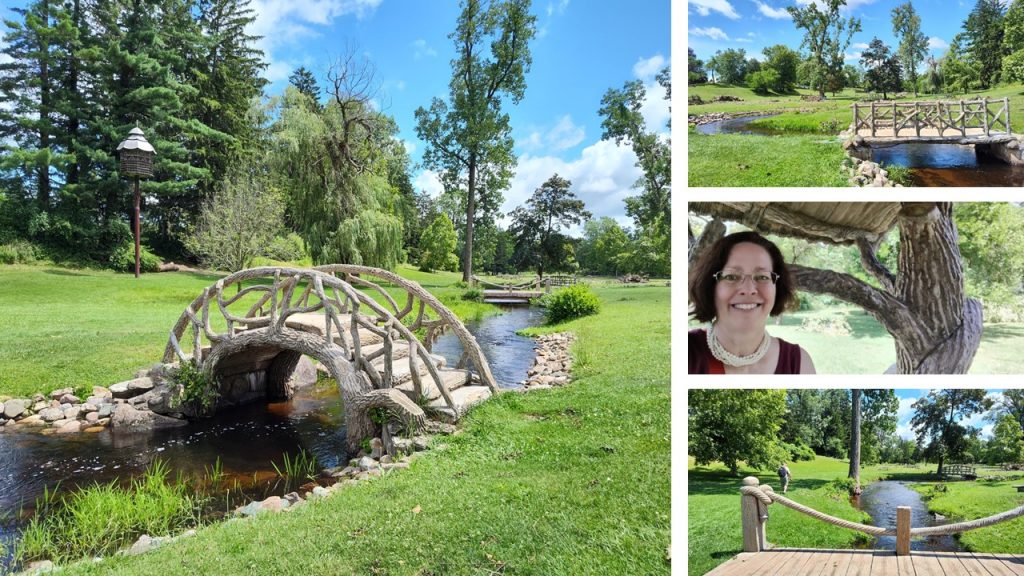
Underground wiring had brought the ability to light these spans with light bulbs.
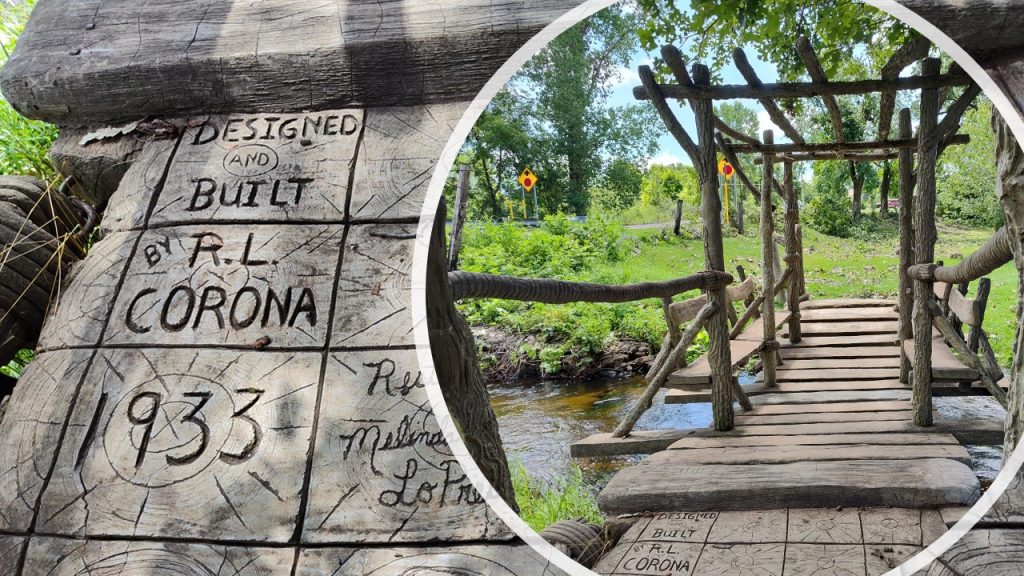
This uncommon artistic style had caught Henry Ford’s attention when he’d visited Herb McCourtie. With Henry Ford’s recommendation, the City of Detroit hired Ralph Corona and George Cardoso to add styled pieces to downtown Detroit.
Aiden’s Lair Future
Sadly in 1933, the same year as the enormous homecoming party where the bridges had been unveiled, Herb McCourtie had passed away due to a six month illness. He was only 61 years old.
In 1939 the McCourtie’s Somerset house had caught on fire destroying the interior beyond repair. At that point the future of Aiden’s Lair was unclear.
The Somerset Center community held its hopeful breath each time individuals purchased the estate. But sadly, the property continued to crumble. It appeared that the extensive land had been too much for any single family.
McCourtie Park Named
In 1987 Somerset Center bought the acreage to create a park for the community. A naming contest had been held and had brought many suggestions: Willow Park, Bridges Park and Stonework Park, but Mable Schmacker had chosen, McCourtie Park, honoring the visionary, Herb McCourtie.
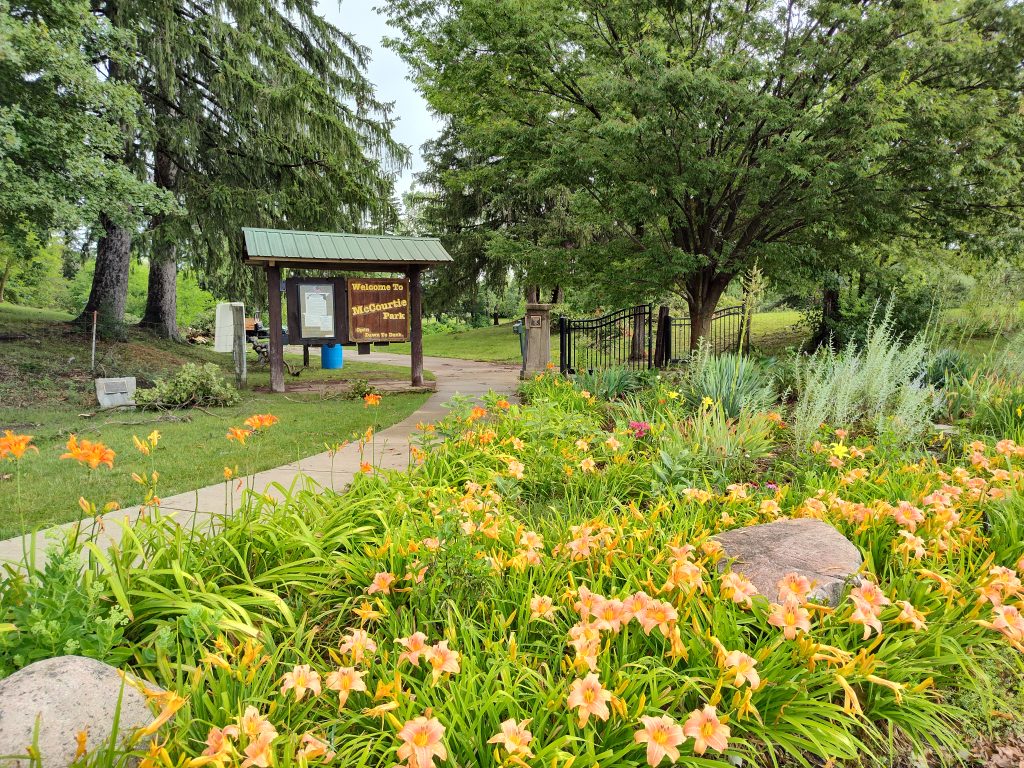
Melinda LoPresto carefully restored the trabajo rustico bridges. Community volunteers and those needing service hours have pitched in (and still assist today) at keeping the grounds pristine.
McCourtie Park Today
Beginning in May, McCourtie Park hosts two events each month through the fall season. Bazaar booths line the grounds along with food trucks. Cornhole tournaments and 4th of July fireworks have been recently enjoyed. Kid’s activities include face painting and balloon art. Terry had recalled a duck race, with plastic yellow toys, cruising along Goose Creek.
With the restoration of the rathskeller, more activities are planned for the future! This area can be rented for events, too! It’s well worth a look-see! Stay curious and make memories!
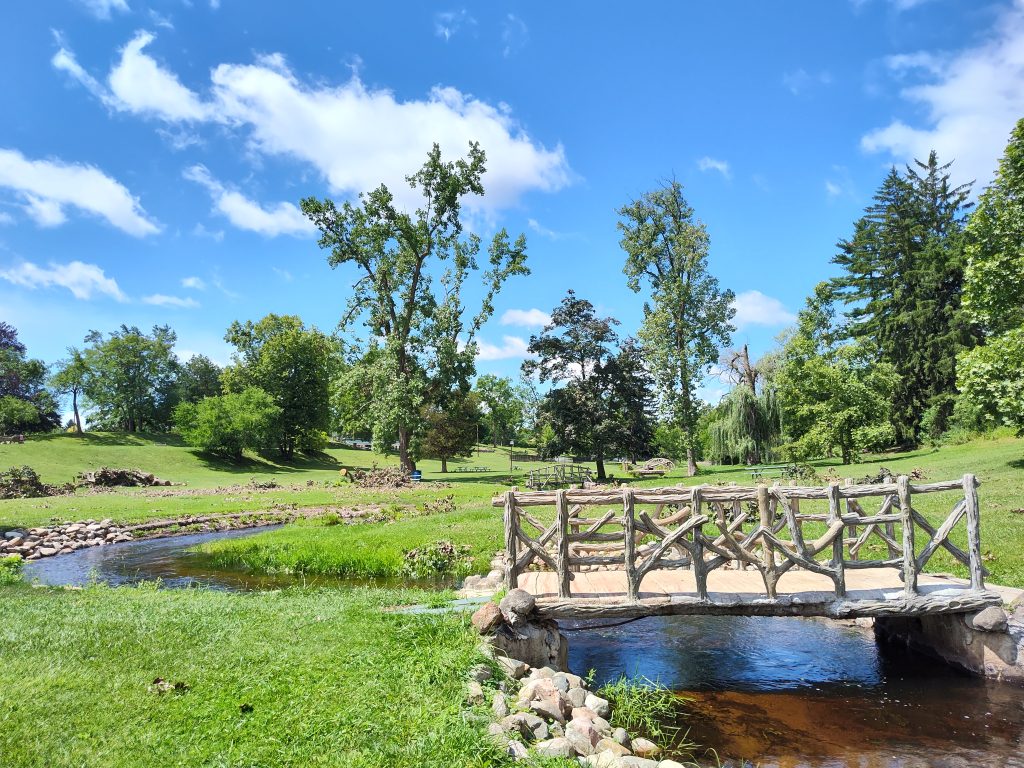
Chuck and Martha Hayden, aka The Viking and Poppins, enjoy going on adventures off the beaten path. They also like to share their explorations with others. The Viking is a retired expedition leader while Poppins is a retired teacher. The two offer independent views of their journeys showcasing places, people, and cultures as they explore the world. Visit and follow them on their website and social media accounts. Website | Facebook | Instagram |YouTube


Leave a Reply